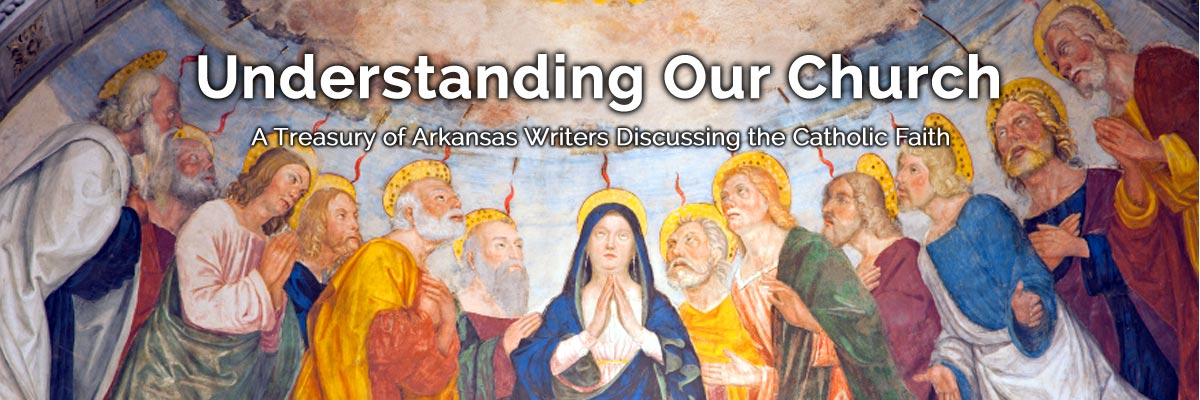Official Website of the
Catholic Diocese of Little Rock
Jesus still wants to be sought out by wise and faithful
Published: December 15, 2016
By Chris Thomas
St. Edward Church, Texarkana
In my home parish of St. Edward in Texarkana, we are blessed to have a large round stained glass window depicting the nativity and epiphany of Jesus. It is a glorious mix of jeweled colors — purples, greens and blues. The richly garbed Magi from the East are portrayed as men with differences in skin color, age and stature. Yet, they are united in their intense gaze upon the Christ Child in his mother’s arms.
The second chapter of Matthew gives us the brief story of the Magi’s quest to find the newborn king of the Jews. They desired to do him homage. Originally, Magi referred to the Persian priestly caste, but it came to be used to describe one having more than human knowledge. The Gospel story does not include the names or number of the Magi, but many believe the number of gifts has led to the tradition of the three Wise Men.
“… on entering the house, they saw the child with Mary his mother. They prostrated themselves … and offered him gifts of gold, frankincense and myrrh.” (Matthew 2:11)
Each had value to a king and a peasant. Myrrh was used as an anointing oil and frankincense as a perfume. Both were distilled from the resin of the trees native to Yemen and Somalia where they are still produced. Gold was a currency. Origen in “Contra Celsum” writes that each also had a spiritual significance: “gold, as to a king; myrrh, as to one who was mortal; and incense, as to a God.”
In the ancient world, these were the gifts offered to sovereigns. At the time of Jerusalem’s restoration, the book of Isaiah tells of those “bearing gold and frankincense and heralding the praises of the Lord.” (60:6)
Each had value to a king and a peasant. Myrrh was used as an anointing oil and frankincense as a perfume. Both were distilled from the resin of the trees native to Yemen and Somalia where they are still produced. Gold was a currency. Origen in “Contra Celsum” writes that each also had a spiritual significance: “gold, as to a king; myrrh, as to one who was mortal; and incense, as to a God.”
Christmas has long been associated with the giving of gifts in great part inspired by these Wise Men. We might pause during these final days of Advent and consider the gifts we will bring to Jesus this Christmas and into 2017. The one that has no monetary value but is the most precious is time.
Turning off the electronics, whether in the morning or evening, for a half hour and sitting quietly in conversation with God — can you imagine a better gift from a beloved child? If you desire a companion in listening to how God speaks his words of love, you might consider enlisting the aid of a spiritual director. The Diocese of Little Rock certified over 20 of them in 2016 from around the state.
The title of Emmanuel means “God is with us.” If indeed he is with us, then serving him through serving others would be another considerate gift, whether that be at your local homeless shelter, visiting the elderly or helping your kids get to bed with a kiss and an assurance of your love. St. Teresa of Calcutta reminds us that “not all of us can do great things, but we can do small things with great love.”
In the stained glass window at St. Edward, the three gifts are symbolized by smoke rising from a thurible held by one of the visitors, with the gold crown and mauve flowers of myrrh found on the floor of the stable. It is almost as if these fabulous gifts are forgotten in the Magi’s intent focus on the child before them.
The central beauty of the window can be found in the outstretched arms of the holy infant as he seems to welcome and bless each present, whether they be in the window or in the congregation.
There is truth in the saying that “the Wise still seek him,” and there is great beauty in the realization that he wants to be found.




